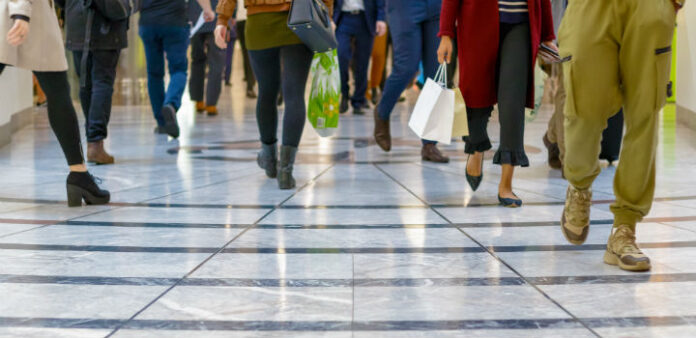The UK-wide November lockdown didn’t work as well as it should have because too many people made the most of their liberty in the run-up to it – according to new research from the University of East Anglia.
A new study shows how infection rates rose dramatically in the five days before lockdown as people went out shopping and socialising in Tiers 1 and 2 before the new rules came into effect.
It comes as the UK is once more plunged into lockdown.
The study also shows that another full lockdown of the same intensity as November would be unlikely to reverse the surge in Covid-19 cases caused by the new variant. However the team’s previous research has shown that school closures had the biggest impact in slowing the spread of Covid-19 in Europe.
Due to the rapid response nature of this research it has not yet been peer reviewed.
Lead researcher and Covid-19 expert Prof Paul Hunter, from UEA’s Norwich Medical School, said: “A tier system was introduced in England on October 14, but just three weeks later a national lockdown was implemented on November 5 which should have curbed the spread of the infection.
“People were instructed to stay at home except for specific purposes, non-essential retail was closed, but schools and universities remained open. However, news about this new lockdown was widely leaked in the last two days of October.
“This gave people almost a week of ‘freedom’ and it seems that this window caused cases to surge.
“The lockdown ended on December 2 but when we emerged, almost all areas were moved up at least one tier.
“We wanted to analyse how well the November lockdown worked, which is particularly important as the prime minister has announced a new lockdown starting today to help cope with the surge in cases.”
The research team studied data on new Covid-19 cases across 315 local authorities in England. They also estimated the virus’ reproductive rate (R value) and looked at whether the mass testing service in Liverpool had helped reduce cases.
Prof Hunter said: “We found that there was a clear surge in infections from a few days before to several days after the lockdown was implemented. But this surge was almost exclusively associated with Tier 1 and Tier 2 authorities. In Tier 3, where hospitality venues were only allowed to operate as restaurants, there was no such surge.
“After this initial surge, cases declined in all three tiers with the R value dropping to a mean of about 0.7 across all tiers. But London, the South East and East of England Regions saw rising infection rates in the last week or so of lockdown primarily in children of secondary school age.
“In Tiers 1 and 2 much of the beneficial impact of the national lockdown was lost – probably because of the leak of its likely implementation several days before, leading to increased socialising in these areas before the start of lockdown.
“The effectiveness of the tier system has also been challenged by the emergence of the new variant which appears to be much more infectious. And we further conclude that given that this new variant is estimated to have an R value of between 0.39 and 0.93 greater than previous variants, any lockdown as strict as the November one would be insufficient to reverse the increase in infections by itself – though it would still slow its increase.
“Finally, we could find no obvious benefit of the trial mass screening programme in Liverpool city on the trajectory of the epidemic so the value of city-wide mass testing to control the epidemic remains uncertain.”







